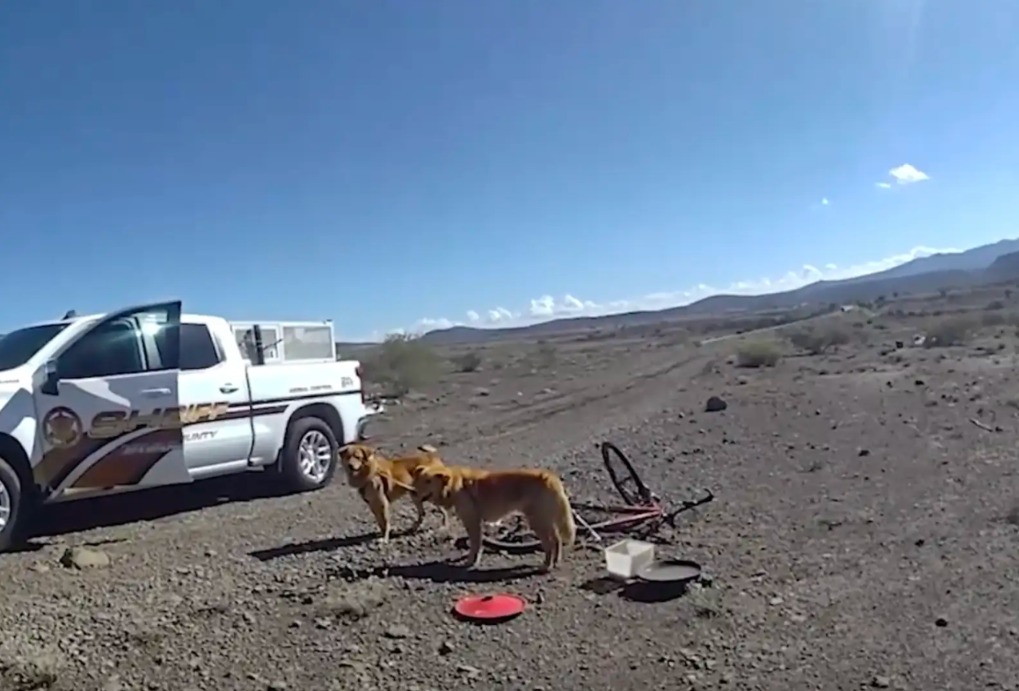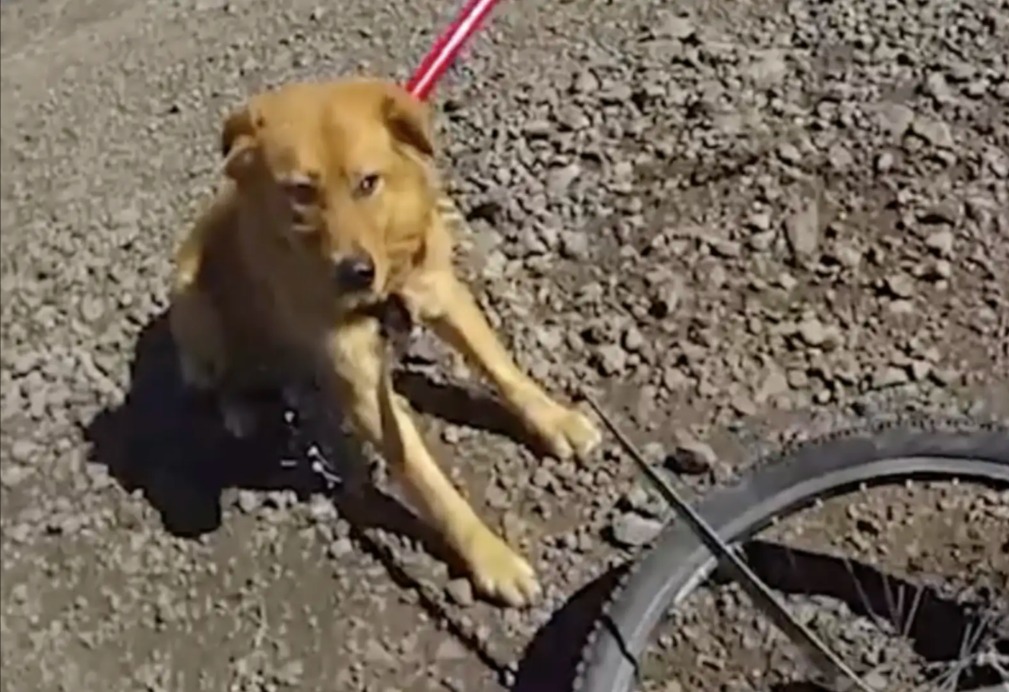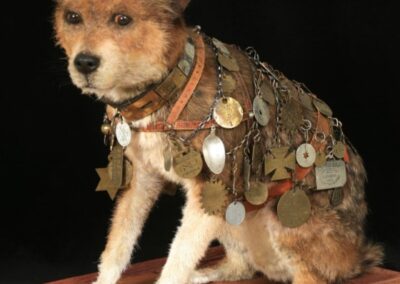
The Arizona desert is not a place you’d expect to find mercy. It’s beautiful, yes—but unforgiving.
The kind of landscape where the air hums with heat, the ground cracks from thirst, and survival depends on luck as much as strength.
That’s where one outdoorsman found himself recently—scouting the dry plains of Yavapai County when something ahead caught his eye.
Two shapes. Brown, still, and too symmetrical to be cactus or rock.
As he drew closer, the mirage sharpened into reality—two fluffy dogs tied to an overturned bicycle, their fur matted with dust, their tongues lolling from thirst.
No food. No water. No human in sight.
It hit him like a punch—someone had abandoned them out here, in the middle of nowhere, where heat can still climb above 90 degrees even in fall.
The outdoorsman’s heart raced. He dropped his gear, reached for his phone, and called for help.
Within minutes, the Yavapai County Sheriff’s Office (YCSO) dispatched two officers to the scene. When they arrived, they too were stunned.
Two young dogs—beautiful, scared, and confused—sat tied to the broken bike, looking up at their rescuers with equal parts hope and fear.
“At first, they barked and backed away,” one officer later said. “They were nervous, unsure what we were going to do.”

The officers didn’t rush. They knew that fear could turn even the sweetest dog defensive.
So they crouched low, spoke softly, and gently tossed a few dog treats across the sand.
The smell of food did its job. The dogs sniffed, then crept closer. One tail gave a tentative wag. Trust—fragile, but real—began to grow.
With patience and care, the officers looped rescue poles around each pup and cut their leashes free from the twisted frame.
In that small act—the snap of nylon, the first steps away from captivity—those dogs got their second chance.
They loaded the pups into their patrol truck, the dogs curling up on the back seat, exhausted but safe at last.
The air conditioning hummed, a small mercy after the endless desert heat.
At the local humane society, staff were ready with bowls of cool water and fresh food. The pups drank greedily, tails now thumping against the floor.
They were dirty, hungry, dehydrated—but alive. And more importantly, no longer alone.
Over the next few days, the shelter gave them what the desert never could: comfort, safety, and care. Clean blankets. Gentle hands.
A quiet place to rest. Slowly, the dogs began to relax—curious now, eyes bright again, ready to believe in people once more.
No one knows how long they had been out there or who left them tied to that bike. But it doesn’t matter anymore. What matters is that someone saw them.
Someone stopped. Someone acted.
It’s easy to scroll past stories like these—to think, “How could anyone do that?” and move on. But the truth is, every rescue starts with one person who refuses to.
That outdoorsman could have kept walking, told himself it wasn’t his problem, that help would come later. Instead, he made the call that saved two lives.
Now, those lives are on the mend. Soon, they’ll find homes where they’ll never know that kind of abandonment again—where bikes are for rides, not for ropes.
And maybe, just maybe, the next time someone sees a strange sight in the distance—something out of place in the heat—they’ll remember this story.
They’ll slow down. They’ll look closer. Because sometimes, saving a life starts with simply not looking away.



